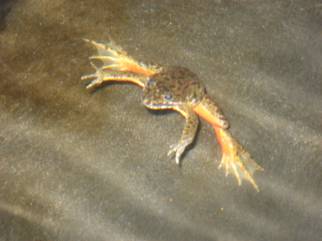Text and photos by Bethany Shepler, Green Track Program Coordinator

After four years of organizing, planning, and building a team, honeybees have arrived at McNeil Island.
This spring marks a special occasion for Washington State beekeeping and beekeepers: we have installed honeybees on McNeil Island! McNeil Island offers wonderful beekeeping prospects because the island is pesticide-free—a rare resource in the region. Pesticides can interfere with bees’ senses, or even be toxic, so having access to a place that is free of pesticides is an exciting opportunity for beekeepers.
A bit of background on McNeil Island
McNeil Island housed a federal penitentiary from 1875 to 1981, when WA Department of Corrections (WA Corrections) took over the facility. In 2011, WA Corrections closed down the prison on McNeil Island, but they continue to be stewards of this epic landscape—Correctional Industry (CI) staff oversee stewardship operations. McNeil Island now houses a Department of Social and Human Services (DSHS) special commitment facility, and the old prison is used by the military, National Guard, WA Corrections, and others for training purposes. (If you want to know more about the island and its history, here’s the link to the Wikipedia page.)

On our trip around the island we would see signs like this one.
We visited the island a week before the bees were dropped off to take a tour and complete preparations. It’s not very big, but it’s a beautiful island nestled in the Puget Sound and mostly covered in vegetation. Sprinkled around the island are boarded-up houses where prison staff lived when the facility was in operation, and there’s even an old school house for their families. Even though we haven’t seen them yet, there are a few bears that live on the island, too!

The expert beekeeping team—we’re so lucky to be working with them! From left to right: Dixon Fellows, Gail Booth, Laurie Pyne, Maren Anderson, and Andy Matelich.
Honeybee Home

The bee hives are in a small structure in the center of this photo; it’s a perfect location, surrounded by an orchard and shielded from the elements by an old bus stop.

The bee installation crew made some final preparations just before the bees moved to their new home.
Collaboration is Key
This project could not have been possible without the collaboration of many different partners including SPP Co-Director Steve Sinclair, staff and administration from Cedar Creek Corrections Center (CCCC), Washington Department of Fish and Wildlife, Washington Department of Natural Resources, CI staff (thank you Brian Peterson, Vania Beard, and Henry Mack!) and leadership, local expert beekeepers from the community, incarcerated beekeepers, and of course, the honeybees. It’s a great team; thank you everyone!
The installation crew included expert beekeepers from the Olympia area, incarcerated beekeepers from CCCC, and staff from CI and CCCC. Five expert beekeepers worked with us to bring this project to life: Maren Anderson, Gail Booth, Dixon Fellows, Andy Matelich, and team lead Laurie Pyne. They scoped-out the island and picked the best location for the bee hives inside the orchard. CCCC inmate beekeepers and and carpenters also made critical contributions to the program, too: they built the hive boxes and supporting benches, helped locate the bus stop, assisted in placement, helped move the bees, and and shone as invested partners! More recently, a major supplier of beekeeping equipment in the region, Mann Lake, donated some of the supplies the program will need as the hives grow and multiply—it is wonderful to have their support.
Honeybees are Nothing to Bee Scared of!

Two worker bees landed on Officer Epling’s fingers; in the background, incarcerated beekeepers attached handles to the hives constructed in the CCCC woodshop.

Expert beekeeper Gail Booth shows an unsure beekeeper a young worker bee that landed on the stick. Gail walked around with the female bee discussing how you could tell her age and what tasks she might perform for her hive; the informal “meet-and-greet” eased some nerves about being so close to the bees.
The Hive Boxes

Incarcerated students from CCCC’s carpentry program, with guidance from Centralia College instructor Bruce Carley, built the custom hives from reclaimed wood. Students also painted and stenciled the bee logo onto each hive box. They look great!

Following the McNeil Island launch, Laurie Pyne visited CCCC’s carpentry class and offered a talk; the students had a chance to learn more about the program and see their great hive boxes in place on the island. They also partook of a honey tasting, comparing the flavors and consistencies of honey made from six sources of nectar; wildflower honey was a favorite.
Suit up

The bees were transported in one of the beekeeper’s truck.

Everyone suited up to protect against getting stung. Even though bees are docile and don’t want to sting you, sometimes they get pinched between clothes or think that the hive is threatened and then they will sting; it’s good to be prepared.
Where’s the Queen?

Expert beekeeper Andy Matelich holds up a frame and looks for the queen. The queens are a key indicator of a hive’s health, and get marked so that they could be easily found again. One of the queens dropped to the ground and could have been squished, but an incarcerated beekeeper with a good eye spotted her and saved the day!

An incarcerated beekeeper placed a frame into the new hive boxes.

Andy and the rest of the bee installation crew inspected each frame before inserting them into the new hive boxes.
At the end of the day, the bees were buzzing around their new homes, no one got stung, and everyone had learned something about bees and beekeeping…there is always more to learn when it comes to bees.

Officer Epling, left, and Officer Kennedy, right, take a minute to look at the bee hives. Officer Epling is teaching Officer Kennedy about bees and beekeeping as Officer Kennedy prepares to take over as liaison for the beekeeping program at CCCC and McNeil Island.
















